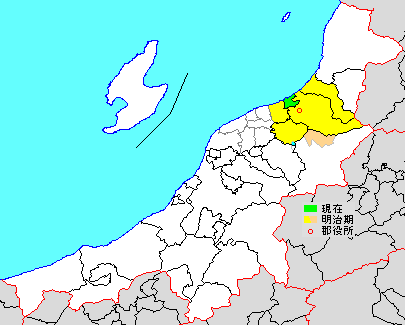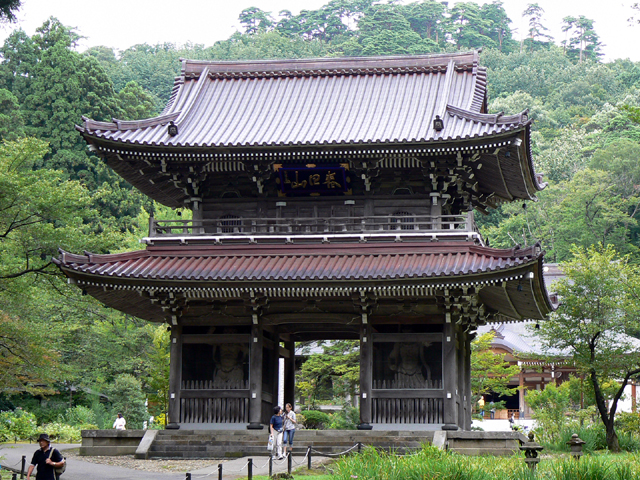|
Nakajō, Niigata
was a town located in Kitakanbara District, Niigata Prefecture, Japan. Nakajō is now part of the newly created city of Tainai. As of 2003, the town had an estimated population of 27,026 and a density of 319.53 persons per km2. The total area was 84.58 km2. The town mascot was named "Lippal". Town of Nakajo. July 22, 2001. Retrieved on November 21, 2010. On September 1, 2005, Nakajō, along with the village of Kurokawa (also from Kitakanbara District), was merged to create the city of ... [...More Info...] [...Related Items...] OR: [Wikipedia] [Google] [Baidu] |
List Of Towns In Japan
A town (町; ''chō'' or ''machi'') is a Local government, local administrative unit in Japan. It is a local public body along with Prefectures of Japan, prefecture (''ken'' or other equivalents), Cities of Japan, city (''shi''), and Villages of Japan, village (''mura''). Geographically, a town is contained within a Districts of Japan, district. The same word (町; ''machi'' or ''chō'') is also used in names of smaller regions, usually a part of a Wards of Japan, ward in a city. This is a legacy of when smaller towns were formed on the outskirts of a city, only to eventually merge into it. Towns See also * Municipalities of Japan * List of villages in Japan * List of cities in Japan * Japanese addressing system References External links "Large City System of Japan"; graphic shows towns compared with other Japanese city types at p. 1 [PDF 7 of 40 /nowiki>] {{Asia topic, List of towns in Towns in Japan, * ... [...More Info...] [...Related Items...] OR: [Wikipedia] [Google] [Baidu] |
Kitakanbara District, Niigata
is a district located in Niigata Prefecture, Japan. As of July 1, 2019, the district has an estimated population of 14,025 with a density Density (volumetric mass density or specific mass) is the ratio of a substance's mass to its volume. The symbol most often used for density is ''ρ'' (the lower case Greek letter rho), although the Latin letter ''D'' (or ''d'') can also be u ... of 373 persons per km2. The total area is 37.58 km2. Municipalities The district consists of only one town: * Seirō History District timeline * On January 1, 1947 - The town of Shibata became a city. * In March 1955 - After it gained city status, Shibata absorbed the villages of Izumino (Ijimino or Ijikuni), Kawahigashi, Sugaya (Sugatani), Matsuura, Yonekura and Akatani (Agaya). * In March 1956 - Some areas of the village of Kajikawa were absorbed into Shibata. * In April 1959 - The village of Sasaki was absorbed into Shibata. * On November 1, 1970 - The town of Toyosaka (part of ... [...More Info...] [...Related Items...] OR: [Wikipedia] [Google] [Baidu] |
Niigata Prefecture
is a Prefectures of Japan, prefecture in the Chūbu region of Honshu of Japan. Niigata Prefecture has a population of 2,131,009 (1 July 2023) and is the List of Japanese prefectures by area, fifth-largest prefecture of Japan by geographic area at . Niigata Prefecture borders Toyama Prefecture and Nagano Prefecture to the southwest, Gunma Prefecture to the south, Fukushima Prefecture to the east, and Yamagata Prefecture to the northeast. Niigata, Niigata, Niigata is the capital and largest city of Niigata Prefecture, with other major cities including Nagaoka, Niigata, Nagaoka, Jōetsu, Niigata, Jōetsu, and Sanjō, Niigata, Sanjō. Niigata Prefecture contains the Niigata Major Metropolitan Area centered on Niigata with a population of 1,395,612, the largest metropolitan area on the Sea of Japan coast and the twelfth-largest in Japan. Niigata Prefecture is part of the historic Hokuriku region and features Sado Island, the sixth largest island of Japan in area following the List o ... [...More Info...] [...Related Items...] OR: [Wikipedia] [Google] [Baidu] |
Japan
Japan is an island country in East Asia. Located in the Pacific Ocean off the northeast coast of the Asia, Asian mainland, it is bordered on the west by the Sea of Japan and extends from the Sea of Okhotsk in the north to the East China Sea in the south. The Japanese archipelago consists of four major islands—Hokkaido, Honshu, Shikoku, and Kyushu—and List of islands of Japan, thousands of smaller islands, covering . Japan has a population of over 123 million as of 2025, making it the List of countries and dependencies by population, eleventh-most populous country. The capital of Japan and List of cities in Japan, its largest city is Tokyo; the Greater Tokyo Area is the List of largest cities, largest metropolitan area in the world, with more than 37 million inhabitants as of 2024. Japan is divided into 47 Prefectures of Japan, administrative prefectures and List of regions of Japan, eight traditional regions. About three-quarters of Geography of Japan, the countr ... [...More Info...] [...Related Items...] OR: [Wikipedia] [Google] [Baidu] |
Tainai, Niigata
file:金屋 方面 - panoramio.jpg, Tulip fields in Tainai is a Cities of Japan, city located in Niigata Prefecture, Japan. , the city had an estimated population of 28,495 in 10,821 households, and a population density of 110 persons per km2 (288/sq mi). The total area of the city was . Geography Tainai is located in northern Niigata Prefecture, bordered by Yamagata Prefecture to the east and the Sea of Japan to the west. The city area has an elongated shape from east to west along the Tainai River basin. There are number of dams in Tainai, including the Tainaigawa Dam and Tainai Dam. Surrounding municipalities *Niigata Prefecture **Murakami, Niigata, Murakami **Sekikawa, Niigata, Sekikawa **Shibata, Niigata, Shibata *Yamagata Prefecture **Oguni, Yamagata, Oguni Climate Tainai has a Humid subtropical climate, Humid climate (Köppen ''Cfa'') characterized by warm, wet summers and cold winters with heavy snowfall. The average annual temperature in Tainai is . The average annual r ... [...More Info...] [...Related Items...] OR: [Wikipedia] [Google] [Baidu] |
Population
Population is a set of humans or other organisms in a given region or area. Governments conduct a census to quantify the resident population size within a given jurisdiction. The term is also applied to non-human animals, microorganisms, and plants, and has specific uses within such fields as ecology and genetics. Etymology The word ''population'' is derived from the Late Latin ''populatio'' (a people, a multitude), which itself is derived from the Latin word ''populus'' (a people). Use of the term Social sciences In sociology and population geography, population refers to a group of human beings with some predefined feature in common, such as location, Race (human categorization), race, ethnicity, nationality, or religion. Ecology In ecology, a population is a group of organisms of the same species which inhabit the same geographical area and are capable of Sexual reproduction, interbreeding. The area of a sexual population is the area where interbreeding is possi ... [...More Info...] [...Related Items...] OR: [Wikipedia] [Google] [Baidu] |
Population Density
Population density (in agriculture: Standing stock (other), standing stock or plant density) is a measurement of population per unit land area. It is mostly applied to humans, but sometimes to other living organisms too. It is a key geographical term.Matt RosenberPopulation Density Geography.about.com. March 2, 2011. Retrieved on December 10, 2011. Biological population densities Population density is population divided by total land area, sometimes including seas and oceans, as appropriate. Low densities may cause an extinction vortex and further reduce fertility. This is called the Allee effect after the scientist who identified it. Examples of the causes of reduced fertility in low population densities are: * Increased problems with locating sexual mates * Increased inbreeding Human densities Population density is the number of people per unit of area, usually transcribed as "per square kilometre" or square mile, and which may include or exclude, for example, ar ... [...More Info...] [...Related Items...] OR: [Wikipedia] [Google] [Baidu] |
Kurokawa, Niigata
was a village located in Kitakanbara District, Niigata Prefecture, Japan. Kurokawa is now part of the newly created city of Tainai. As of 2003, the village had an estimated population of 6,577 and a density of 36.42 persons per km2. The total area was 180.60 km2. On September 1, 2005, Kurokawa, along with the town of Nakajō (also from Kitakanbara District), was merged to create the city of Tainai Tulip fields in Tainai is a city located in Niigata Prefecture, Japan. , the city had an estimated population of 28,495 in 10,821 households, and a population density of 110 persons per km2 (288/sq mi). The total area of the city was . Geography .... Tainai City has a population of approximately 33,000. References External links Village of Kurokawa(Archive) City of Tainai Dissolved municipalities of Niigata Prefecture Tainai, Niigata {{Niigata-geo-stub ... [...More Info...] [...Related Items...] OR: [Wikipedia] [Google] [Baidu] |
Southern Illinois University Carbondale
Southern Illinois University (SIU) is a public research university in Carbondale, Illinois, United States. Chartered in 1869, SIU is the oldest and flagship campus of the Southern Illinois University system. SIU enrolls students from all 50 states and more than 100 countries. Originally founded as a normal college, the university today provides programs in a variety of disciplines. SIU was granted limited university status in 1943 and began offering graduate degrees in 1950. A separate campus was established in Edwardsville, Illinois in 1957, eventually becoming Southern Illinois University Edwardsville. The university is classified among "R1: Doctoral Universities – very High research activity". It is also known for its research partnerships, including those with the Argonne and Oak Ridge National Laboratories, the U.S. Geological Survey, the U.S. Fish and Wildlife Service, and NASA. The university is home to hundreds of student organizations, twenty-seven fraternity and sor ... [...More Info...] [...Related Items...] OR: [Wikipedia] [Google] [Baidu] |
High School
A secondary school, high school, or senior school, is an institution that provides secondary education. Some secondary schools provide both ''lower secondary education'' (ages 11 to 14) and ''upper secondary education'' (ages 14 to 18), i.e., both levels 2 and 3 of the ISCED scale, but these can also be provided in separate schools. There may be other variations in the provision: for example, children in Australia, Hong Kong, and Spain change from the primary to secondary systems a year later at the age of 12, with the ISCED's first year of lower secondary being the last year of primary provision. In the United States, most local secondary education systems have separate middle schools and high schools. Middle schools are usually from grades 6–8 or 7–8, and high schools are typically from grades 9–12. In the United Kingdom, most state schools and privately funded schools accommodate pupils between the ages of 11 and 16 or between 11 and 18; some UK privat ... [...More Info...] [...Related Items...] OR: [Wikipedia] [Google] [Baidu] |
English Studies
English studies (or simply, English) is an academic discipline taught in primary, secondary, and post-secondary education in English-speaking countries. This is not to be confused with English taught as a foreign language, which is a distinct discipline. The English studies discipline involves the study, analysis, and exploration of English literature through texts. English studies include: * The study of literature, especially novels, plays, short stories, and poetry. Although any English-language literature may be studied, the most commonly analyzed literature originates from Britain, the United States, and Ireland. Additionally, any given country or region teaching English studies will often emphasize its own local or national English-language literature. * English composition, involving both the analysis of the structures of works of literature as well as the application of these structures in one's own writing. * English language arts, which is the study of gra ... [...More Info...] [...Related Items...] OR: [Wikipedia] [Google] [Baidu] |
Dissolved Municipalities Of Niigata Prefecture
Dissolution may refer to: Arts and entertainment * ''Dissolution'', a 2002 novel by Richard Lee Byers in the War of the Spider Queen series * ''Dissolution'' (Sansom novel), by C. J. Sansom, 2003 * ''Dissolution'' (Binge novel), by Nicholas Binge, 2025 * ''Dissolution'' (Olivia Block album), 2016 * ''Dissolution'' (The Pineapple Thief album), 2018 * "Dissolution", a 2001 TV episode of ''Spaced'' Politics and law * Dissolution (politics), when a state or institution ceases to exist ** Dissolution of parliament *** Dissolution of the Parliament of the United Kingdom * Dissolution (law), any of several events that terminate a legal entity such as a marriage, adoption, corporation, or union * Dissolution of the Monasteries, in England, Wales and Ireland 1536–1541 Other uses * Dissolution (chemistry) Solvations describes the interaction of a solvent with dissolved molecules. Both ionized and uncharged molecules interact strongly with a solvent, and the strength and nature ... [...More Info...] [...Related Items...] OR: [Wikipedia] [Google] [Baidu] |





